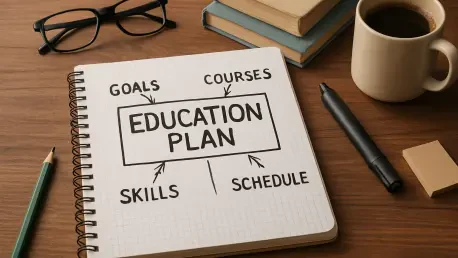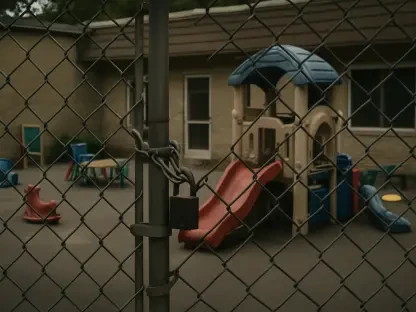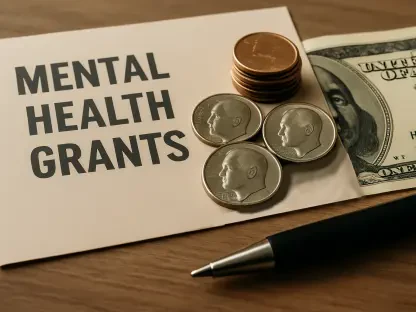In the final stretch of the New York City mayoral race, with just over a month remaining, a surprising issue has taken center stage: education. Former Governor Andrew Cuomo, running as an independent and significantly behind frontrunner Zohran Mamdani in the polls, has latched onto this often-overlooked topic to carve out a distinct identity in a crowded field. With the city’s Education Department serving over 1 million students and falling directly under the mayor’s authority, the stakes are enormous. Yet, most candidates have sidelined the issue in favor of more immediate concerns like affordability and public safety. Cuomo’s decision to spotlight education, particularly by targeting Mamdani’s lack of a concrete plan, appears to be a calculated effort to exploit a gap that could resonate with parents, educators, and advocates frustrated by the absence of meaningful dialogue on the future of the nation’s largest school system.
Education as a Campaign Flashpoint
Cuomo’s Strategic Pivot
As the mayoral race tightens, Andrew Cuomo’s focus on education emerges as a deliberate tactic to differentiate himself from competitors, especially given his double-digit deficit in polls against Zohran Mamdani. Trailing significantly, the former governor has identified a critical void in the campaign narrative—most candidates have paid scant attention to the city’s sprawling Education Department despite its profound impact on over 1 million students and families. By zeroing in on this issue, Cuomo aims to position himself as the candidate with a vision for systemic change, appealing to voters who feel education deserves more than a passing mention. His aggressive push includes public critiques of opponents’ inaction, framing education not just as policy but as a moral imperative for the city’s future, potentially swaying undecided voters who prioritize long-term investments over short-term fixes.
This strategic pivot also serves as a platform for Cuomo to showcase his experience and policy depth, contrasting sharply with the broader campaign’s focus on issues like crime and housing costs. His campaign has rolled out detailed proposals through editorials and virtual town halls, emphasizing actionable ideas that could address systemic challenges within the school system. While other candidates have largely stuck to safer, more voter-friendly topics, Cuomo’s gamble on education seeks to tap into a latent frustration among parents and advocacy groups who have long demanded more robust leadership on this front. Whether this move will translate into votes remains uncertain, but it undeniably shifts the conversation, forcing rivals to confront an area many have conspicuously avoided throughout the race.
Mamdani’s Policy Gap
Zohran Mamdani, the Queens assemblyman and Democratic Socialist leading the polls, finds himself under intense scrutiny for the glaring absence of a detailed education platform, a weakness Cuomo has been quick to exploit. Mamdani’s campaign website offers only a handful of vague statements on the issue, with his central proposal—dismantling mayoral control of schools in favor of a system more responsive to parents and educators—lacking any specific framework or timeline for implementation. This thin outline leaves critical questions unanswered about how he would manage the nation’s largest school district, particularly on pressing matters like resource allocation and student outcomes. Cuomo’s pointed criticism underscores this gap, framing Mamdani as unprepared to handle a department that shapes the lives of over 1 million students, potentially eroding confidence among education-focused voters.
In stark contrast, Cuomo has presented a comprehensive 28-page education agenda, brimming with specific initiatives that range from expanding prekindergarten access for 3-year-olds to advocating for more charter schools by lifting state caps. His plan also includes controversial measures like reinstating standardized tests and attendance as criteria for middle and high school admissions, policies that have garnered support from groups advocating for selective programs. While Mamdani’s limited remarks touch on ideals like addressing school segregation and reducing wasteful spending, the absence of actionable details leaves his vision open to interpretation and criticism. This disparity in policy depth not only highlights Mamdani’s vulnerability but also amplifies Cuomo’s narrative that a clear, detailed strategy is essential for tackling the complexities of the city’s education system.
Political Risks and Opportunities
Cuomo’s Controversial Past
While Andrew Cuomo’s emphasis on education offers a potential edge in the mayoral race, it also unearths a contentious history that could alienate key voter groups. During his tenure as governor, his push to tie teacher evaluations to standardized test scores ignited fierce opposition from educators and unions, culminating in widespread test boycotts and lasting resentment. This past policy, coupled with his high-profile resignation amid unrelated scandals, casts a shadow over his current campaign, raising doubts about his ability to unify stakeholders in the education sector. Critics argue that his reform-heavy agenda, while detailed, risks reigniting old battles, particularly with influential groups like the United Federation of Teachers, which has endorsed Mamdani and remains wary of Cuomo’s track record on school funding and labor relations.
Despite these challenges, Cuomo’s education plan includes elements with broad appeal, such as expanding community schools with wraparound services to support students beyond academics. However, his recent public hostility toward teachers’ unions and his dismissal of state mandates like class size caps as “reckless” due to funding shortages could further polarize opinions. For many voters, especially those in high-need districts, memories of underfunded schools during his governorship linger, complicating his efforts to present himself as a champion of equitable education. The risk lies in whether these historical controversies overshadow his current proposals, potentially undermining his credibility with parents and educators who prioritize trust and collaboration over bold, divisive reforms in the city’s school system.
Broader Candidate Inaction
The broader landscape of the mayoral race reveals a striking lack of engagement with education policy among other prominent candidates, amplifying Cuomo’s singular focus on the issue. Mayor Eric Adams, seeking reelection as an independent, has barely made education a cornerstone of his campaign, instead diverting attention to other priorities and recently critiquing policies on transgender student protections under external political pressure. This sidestepping of a department under direct mayoral control suggests a calculated avoidance of complex, less immediately rewarding issues, leaving a void that Cuomo has eagerly filled. Adams’ silence on systemic education challenges frustrates advocates who see the mayor’s role as pivotal in shaping student outcomes across the city’s diverse districts.
Similarly, Republican nominee Curtis Sliwa has offered only cursory nods to education, primarily through support for pro-charter initiatives, without crafting a comprehensive narrative or detailed policy framework. This collective inattention from major contenders underscores a campaign trend where immediate voter concerns like cost of living and public safety dominate, often at the expense of long-term systemic issues like schooling. The lack of robust discussion from Adams, Sliwa, and others not only highlights the opportunity Cuomo has seized but also raises questions about whether education will ever gain the traction it deserves in an election cycle preoccupied with more visceral, day-to-day struggles. This dynamic positions Cuomo as the outlier willing to stake his campaign on a less popular but critical issue.
Voter Impact and Broader Implications
Uncertainty of Electoral Influence
As the mayoral race nears its conclusion, political observers remain divided on whether education, despite Cuomo’s efforts, will significantly influence voter behavior in an election dominated by pressing concerns like affordability and crime. Experts such as Columbia University Professor Jonathan Collins point out that while Mamdani’s lack of a substantive education plan represents a clear vulnerability, the issue may not resonate enough with the broader electorate to shift the race’s trajectory. Many voters, grappling with immediate economic pressures and safety fears, might view education as a secondary priority, even though it directly impacts over 1 million students and families. Cuomo’s gamble to elevate the topic, while strategically sound in highlighting an opponent’s weakness, faces the uphill battle of redirecting public focus in a campaign already saturated with more urgent-sounding issues.
Moreover, the polarization of education policy approaches between Cuomo’s reform-driven, choice-based agenda and Mamdani’s equity-focused but vague intentions mirrors national debates, yet lacks the depth to fully engage voters on either side. Cuomo’s detailed proposals cater to specific constituencies like parents favoring selective admissions, but risk alienating others who associate his past governance with inequity or conflict. Mamdani’s minimal engagement, meanwhile, fails to offer a compelling counter-narrative that could mobilize progressive voters passionate about systemic change. The uncertainty lies in whether education can break through as a decisive factor or remain a niche concern, overshadowed by the electorate’s focus on tangible, everyday challenges, leaving Cuomo’s strategy as a bold but potentially unimpactful move in the final weeks.
Looking Ahead to Education’s Role
Reflecting on the campaign’s trajectory, it becomes evident that education, though initially sidelined, gained unexpected prominence through Cuomo’s targeted critique of Mamdani’s sparse platform. The former governor’s detailed proposals stood in sharp relief against a field where other candidates offered little substance on the issue, yet his controversial history tempered the impact of his push. Mamdani’s inability to articulate a clear vision for the city’s schools left a void that could have been filled with a stronger counterargument but instead became a liability in the race’s closing stages.
Moving forward, the challenge for future campaigns and policymakers lies in ensuring education secures a lasting place in electoral discourse, beyond being a last-minute differentiator. Stakeholders must advocate for sustained attention to the needs of over 1 million students, urging candidates to prioritize detailed, equitable plans over fleeting rhetoric. The next steps involve fostering public dialogue—through forums and community engagement—that elevates education as a core voter concern, while holding elected officials accountable for actionable reforms. Only then can the city’s school system receive the focus it warrants, shaping a future where policy matches the scale of its impact on generations.









